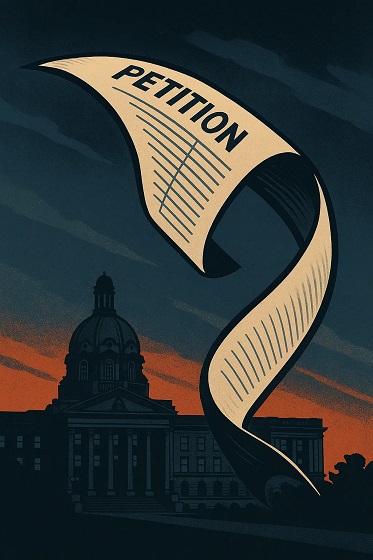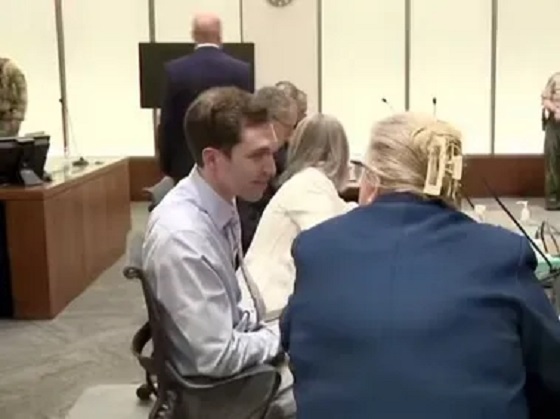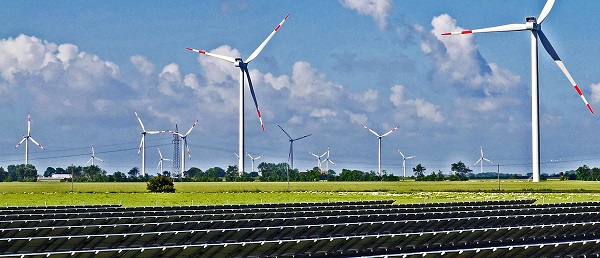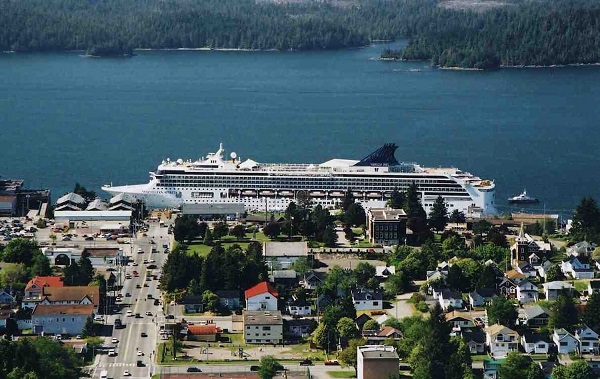Uncategorized
Similar to German crisis! Asylum seekers spreading from largest cities into the rest of Canada
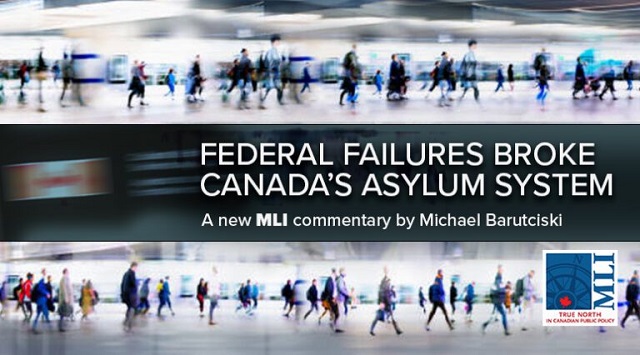
Federal failures broke Canada’s asylum system
From the MacDonald Laurier Institute
By Michael Barutciski
Our quiet asylum crisis is largely a self-inflicted wound.
Introducing the problem
Recently released statistics indicate over 144,000 migrants claimed asylum in Canada during 2023. This is the highest year on record and is several times higher than any year before the Liberals formed government in 2015. Until a decade ago, Canada was receiving on average less than 25,000 asylum claims per year.
In the days following the publication of the latest numbers Canada’s English-speaking media barely covered this story, despite extensive reporting from Quebec media. Perhaps this is not surprising given that almost half the asylum claims were made in Quebec, prompting premier François Legault to send a formal letter to prime minister Justin Trudeau requesting financial help and measures to stem the flow. However, a comparable number of claims were made in Ontario, which explains why Toronto’s municipal authorities have also been asking for federal money to help with the overwhelmed local services.
Why have there been so many asylum claims in 2023 despite the closing of Roxham Road almost a year ago? After several years of use by asylum seekers, the infamous rural crossing between Quebec and upstate New York was closed. Activists and academics warned that illegal entries along the U.S. land border would increase but this did not happen. Entering illegally was simply not necessary because Ottawa also loosened legal requirements for entry to Canada; the easiest way to eliminate so-called “irregular” migration is to “regularize” it.
The explosion in asylum claims post-Roxham is the result of two simultaneous policy decisions: (1) loosening the criteria for visa issuance and (2) allowing visa-free travel for potential asylum seekers. In other words, our quiet asylum crisis is largely a self-inflicted problem.
The only logical explanation for these striking policy decisions is wide-spread ideological conviction that Canada must be as open as possible. But this conviction is now posing a long-term threat to the asylum system. The country has suffered from a lack of debate and viewpoint diversity that allowed this simplistic ethic to flourish unopposed throughout our political and media establishment.
The good news is that Canadians are finally having a genuine debate about immigration policy. It is encouraging that this debate is also happening within an atmosphere that remains decidedly pro-immigration. No serious analyst is blaming the actual migrants; the blame is instead directed at administrative policies that have allowed the proliferation of incoherence and even abuse in our system.
However, within this new debate on immigration policy, we need to keep in mind that asylum is a distinct issue that carries its own important legal and moral obligations. Our liberal democratic principles are subverted if we do not treat those who seek asylum humanely and with dignity.
We also need to make sure that the principles undergirding our asylum system are coherent. The justification for who we decide to grant asylum to, as well as who is denied protection and removed from Canada should be plain to the public. Distortion or abuse of these principles can undermine public confidence and support for the generosity that has long characterized Canada’s international image.
The federal government’s laxness in sticking to and articulating a principled policy created the current problem. Canada is once again faced with an asylum predicament, while the country’s fiscal position limits the policy options. Any Canadian concerned with the well-being of individuals seeking asylum should be concerned that Canada may be forced to turn away from our historically humanitarian approach as a corrective to a crisis created by near-sighted and careless policy.
Contextualizing the asylum numbers globally and domestically
Examining comparable western liberal democracies reveals an important context.
The broken asylum system in the U.S. is yet again playing a role in the upcoming presidential election as Americans watch uninvited migrants flow through their southern border with Mexico to claim asylum. In the meantime, president Biden has resumed construction of the border wall he stopped early in his mandate.
As the European country with the most asylum seekers, Germany has received a similar number of asylum seekers per capita compared to Canada. A key distinction is that Germany’s progressive leaders have been acknowledging there is a crisis. The United Kingdom is still trying to enact draconian legislation to stop asylum seekers from crossing the Channel and to establish an offshore processing scheme in faraway countries such as Rwanda. Likewise, Italy has announced it will intercept ‘boat people’ crossing the Mediterranean and transfer them to Albania for processing. Austria and Denmark are exploring a similar approach. More extreme Dutch politicians recently won an election in the Netherlands on migration-related problems and they are now trying to form a government.
Across the world political leaders, ranging from U.S. Democrats to Germany’s coalition Social Democrat and Green partners, are realizing that current approaches to asylum are undermining their democracies and stoking reactionist anti-immigrant rhetoric. By constantly emphasizing their openness to migration and refusing to acknowledge problems, the Trudeau’s Liberals appear as a global outlier even among progressive (typically pro-immigration) governments.
The Canadian problem is not as dramatic as the situation on some parts of the Mexico-U.S. border or the Mediterranean sea routes in Europe. The issue in Canada, however, is still breaking a system which has traditionally relied on strong public confidence in our borders and controlled migration flows.
To understand the latest Canadian asylum statistics, we also need to distinguish asylum numbers from the numbers concerning another category: the refugee resettlement program that selects and resettles vulnerable people from overseas. As Prime Minister Trudeau has said, Canada should be proud that it is a world leader for this distinct category which is part of the annual intake of permanent residents.
The refugee resettlement program is an example of controlled migration. The incoming numbers can be adjusted at any moment because government authorization for entry under this category is ultimately a discretionary act. It also does not raise policy challenges comparable to sudden flows of uninvited asylum seekers. The government can only try to dissuade uncontrolled migration through measures such as strict visa controls and interstate cooperation, along with airline sanctions for undocumented travelers. Canada was known for decades as a model country regarding this type of migration control.
To suggest that Canada’s recent spike in asylum claims is related to a global displacement crisis, as repeated by the federal government and others trying to downplay the situation, is to ignore the distinct demographics of the Canadian inflow. The global statistics mostly reflect displaced people who remain within their countries of origin, along with those fleeing specific conflict situations (e.g. Syria, Afghanistan, Ukraine); by and large these are not the migrants claiming asylum in Canada.
Mexico remains the top source country for asylum claims in Canada, yet the federal government continues to allow Mexicans to enter the country without visas. Second place is currently held by citizens of India, which is also a top source country for accepted temporary residents. The unusual situation has been highlighted by Quebec media that reported on the high number of international students claiming asylum.
According to Radio-Canada, immigration authorities also quietly implemented a new policy to expedite temporary visa processing, including removing the need for proof that applicants will leave Canada at the end of their stay. This has reportedly made it easier for people who would normally have difficulty obtaining tourist visas to enter and then claim asylum upon arrival. This stands in contrasts to a policy held for decades characterized by restrictive visa rules. Unsurprisingly, the international airports in Montreal and Toronto have become magnets for asylum claims.
Another argument used by those downplaying the situation is that Canada is simply taking its fair share when we make global comparisons. While it is true that the vast majority of displaced persons are stuck in poor countries of the global south, this argument is somewhat misleading. Canada is a modern, rich country that offers unparalleled treatment to asylum seekers including generous benefits and almost automatic citizenship to those granted asylum. In many other regions asylum seekers often struggle to receive adequate food and shelter and are given a precarious status from unstable host governments. Suggesting Canada is hosting only a small fraction of these vulnerable migrants is to compare apples with oranges.
Compounding the issues with asylum seekers, the recent boom in government-authorized temporary residents includes migrants who intend to stay permanently; it is reasonable to expect that the inevitable failure of many to secure permanent status will lead to problems of visa overstaying and even abusive asylum claims.
A final piece of context for understanding just how out of control Canada’s asylum numbers have become is the reality of undocumented individuals already living in Canada. Immigration Minister Marc Miller said that Canada now has a significant population of undocumented migrants, possibly over half a million. After decades of resisting American mistakes, we have imported the problem that has contributed to a broken immigration system in the U.S. The immigration minister is presently preparing an amnesty program that would provide a pathway to permanent residence for some of these undocumented migrants. But this presents a moral dilemma; we cannot simply dismiss the unlawful nature of their presence in Canada.
Distinguishing between false and realistic solutions
Many of the so-called solutions typically suggested by activists and academics are unrealistic. The most common proposal is getting the federal government to simply provide more funding at the local level. Premier Legault is seeking financial help for Quebec, just as Mayor Olivia Chow is for Toronto. Her city’s budget chief refers to a “global crisis in mass migration” and an “existential crisis” in her public appeals to pressure the federal government, while a Liberal MP from Toronto complains of what he perceives to be a “shakedown”.
Another common proposal is to implement a burden or responsibility sharing scheme across the federation so that the bulk of the asylum seekers are not hosted in Quebec and Ontario’s biggest cities. Even in the unlikely situation that the Trudeau Liberals were to accept the mandatory nature of these transfers, it would ultimately be little more than a band-aid in that similar tensions and requests for funding would inevitably arise in other provinces. Likewise, many commentators are urging the federal government to deliver work permits more quickly so that fewer asylum seekers have to rely on social assistance from provincial governments but this too skirts around the core of the problem.
The number of asylum seekers is simply too large and resources at all levels are too small. It is not realistic to expect massive new spending from any level of government during a cost-of-living and housing crisis.
However, there are concrete actions that the federal government can and should take.
Given the influx of Mexican asylum seekers, imposing visas on Mexicans is one measure any responsible government should take. More than 22,000 Mexicans claimed asylum in Canada in the first eleven months of 2023. The Harper government imposed visas on Mexicans in 2009 in the same way that all western countries impose visas on source countries when the number of asylum claims rises significantly. The Trudeau Liberals removed these visa requirements in 2016. We are now well beyond the numbers that previously triggered the imposition of visa requirements and the government will be forced to reverse its decision.
There is also an important security factor that has barely been reported in English-speaking Canada: criminal elements associated with this particular inflow of Mexican asylum seekers have attracted Washington’s attention. Given that the U.S. imposes visa requirements on Mexicans, it is not surprising that it has asked Canada to reinstate them to prevent clandestine entry from its northern border.
The other measure the federal government should take to regain public trust is to tighten recently relaxed visitor visa issuance. This major policy shift is likely related to the new client-focused attitude, a focus on shorter wait times so that visa applicants are satisfied, spreading within the immigration department. Although understandable to some extent, an unqualified shift in this direction appears misplaced for any bureaucratic service that participates in the important state function of border control.
It is astonishing that such an important change to visa issuance was made during the last year despite internal warnings that it would lead to a jump in asylum claims. Unfortunately, decision-making at the ministerial level seems to be driven by ideological commitments rather than by the empirical evidence of Canada’s needs and capacity.
Explaining these self-imposed problems
It is difficult to know precisely what motivated this policy shift because little information was made public. The only apparent explanation is the desire for virtue signaling and the appearance of compassionate policy from the PM and his various immigration ministers.
The Trudeau Liberals apparently hold the moral conviction that Canada should take an abstract and ill-defined “fair share” regardless of how this affects the overall integrity of the system. They also believe that their progressive university-educated urban constituencies are onboard with an ideological worldview that encourages open borders.
This is partly related to the longstanding politicization of universities. By overcompensating in their attempts not to appear anti-immigrant, Canada’s political and media class are reinforcing the failure of the country’s universities to promote a diversity of analysis concerning the asylum dilemma. Border control and the legitimacy of borders is routinely questioned in universities and there is generally dogmatic refusal to accept enforcement via removals to maintain the system’s integrity.
It is a clear reflection of bias that Canada’s responsibility-sharing treaty with the US, the Safe Third Country Agreement (STCA), was uniformly denounced in Canada’s publicly funded law journals and academic publications. It took our Supreme Court to clarify, in an unanimous judgment last year, that the US is indeed safe for asylum seekers as stated in the STCA. Publicly funded research should not be so obviously one-sided in addressing complex border issues, especially when credible outside voices (including the Supreme Court) clearly take an opposing view of the law in question.
The concerns raised by the activist academics in this field are not always illegitimate, but the absence of any debate on the larger policy issues creates an echo-chamber in which opposing ideas are rejected out of hand. As a consequence, it is difficult for students to succeed without embracing a social justice agenda.
Progressive media and politicians are promoting an ideology that espouses there is global injustice resulting from a supposed “birthright lottery”. The idea is that people from poor and unstable regions are unable to travel to western countries because they are not lucky enough to have been born somewhere that provides passports which allow visa-free travel. Contrary to western citizens who can easily travel to most countries, these losers in the “birthright lottery” are forced to take risky journeys to claim asylum if they want to escape their difficult conditions. This is the progressive liberal approach to the concept of asylum favoured on Canadian campuses.
There is no doubt that this view is attractive from a perspective which values maximal individual liberty but, while it is understandable to sympathize with reversing a perceived global injustice, it is foolish to manage migration with theoretical and ideological constructs devoid of data or real-world concerns. Progressive theorists would have us believe that the capacity for migrants to integrate into a society is limitless because it depends on political will, but in the real world there are both political and practical constraints.
Former German president Joachim Gauck, a leader who symbolizes moral clarity on humanitarian issues, recently gave this terse warning: “limiting migration is not something to be condemned”. It is this type of straight-shooting practical wisdom that is required to reform our liberal democracies that are overwhelmed by asylum seekers.
Concluding remarks
The humanitarian intentions manifested by the Trudeau Liberals are admirable. But good intentions alone are not enough for an effective and sustainable asylum policy. By pushing a well-intentioned but overly generous approach to asylum, inspired by a post-national ideology, the current government threatens the integrity of Canada’s immigration system. There is too much blind ideological conviction and not enough practical focus on how to protect Canada’s interests, make the most of limited resources, and maintain a compassionate immigration policy in the long-term.
The international asylum system was set up to protect limited numbers of individuals from political persecution. It was not set up to allow masses of people to migrate through back-channels and to be able to stay in host countries by claiming asylum. The goal of any Canadian government must be to avoid importing aspects of the broken U.S. asylum system. This is necessary to maintain a compassionate fair-minded and distinctly Canadian approach.
Realistic policymakers should make sure protection is limited to migrants fleeing individualized persecution (as intended by drafters of the 1951 Refugee Convention). This implies a willingness to enforce the rules to preserve the system’s credibility.
Prime Minister Trudeau has increasingly appeared as a moralist who seems more comfortable preaching his detached values and worldview than governing based on the realities of a situation at hand. Even for those who share many of Trudeau’s views on the importance of migration and diversity to Canadian identity and culture, his underlying attitude can appear patronizing to the extent that diverging opinions are unfairly painted as xenophobic or racist. As a political leader who contributes to setting the tone, this harms the level of debate in a country that depends on sophisticated and nuanced analysis of migration.
The Liberals came to power partly because of the humanitarian spirit they displayed during the Syrian refugee crisis. But now asylum issues may contribute to their downfall as Canadians become increasingly aware of how detached from reality their policies have become.
About the author
Michael Barutciski is a faculty member of York University’s Glendon College. He worked throughout the 1990s as fellow in law at Oxford University’s Refugee Studies Centre, as well as York’s Centre for Refugee Studies. He was later editor-in-chief of Refuge (Canada’s refugee studies journal).
Uncategorized
Cost of bureaucracy balloons 80 per cent in 10 years: Public Accounts
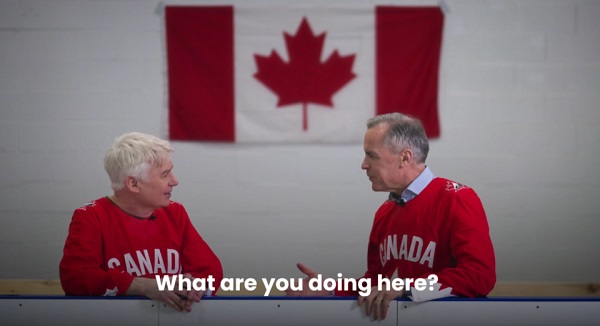
The cost of the bureaucracy increased by $6 billion last year, according to newly released numbers in Public Accounts disclosures. The Canadian Taxpayers Federation is calling on Prime Minister Mark Carney to immediately shrink the bureaucracy.
“The Public Accounts show the cost of the federal bureaucracy is out of control,” said Franco Terrazzano, CTF Federal Director. “Tinkering around the edges won’t cut it, Carney needs to take urgent action to shrink the bloated federal bureaucracy.”
The federal bureaucracy cost taxpayers $71.4 billion in 2024-25, according to the Public Accounts. The cost of the federal bureaucracy increased by $6 billion, or more than nine per cent, over the last year.
The federal bureaucracy cost taxpayers $39.6 billion in 2015-16, according to the Public Accounts. That means the cost of the federal bureaucracy increased 80 per cent over the last 10 years. The government added 99,000 extra bureaucrats between 2015-16 and 2024-25.
Half of Canadians say federal services have gotten worse since 2016, despite the massive increase in the federal bureaucracy, according to a Leger poll.
Not only has the size of the bureaucracy increased, the cost of consultants, contractors and outsourcing has increased as well. The government spent $23.1 billion on “professional and special services” last year, according to the Public Accounts. That’s an 11 per cent increase over the previous year. The government’s spending on professional and special services more than doubled since 2015-16.
“Taxpayers should not be paying way more for in-house government bureaucrats and way more for outside help,” Terrazzano said. “Mere promises to find minor savings in the federal bureaucracy won’t fix Canada’s finances.
“Taxpayers need Carney to take urgent action and significantly cut the number of bureaucrats now.”
Table: Cost of bureaucracy and professional and special services, Public Accounts
| Year | Bureaucracy | Professional and special services |
|
$71,369,677,000 |
$23,145,218,000 |
|
|
$65,326,643,000 |
$20,771,477,000 |
|
|
$56,467,851,000 |
$18,591,373,000 |
|
|
$60,676,243,000 |
$17,511,078,000 |
|
|
$52,984,272,000 |
$14,720,455,000 |
|
|
$46,349,166,000 |
$13,334,341,000 |
|
|
$46,131,628,000 |
$12,940,395,000 |
|
|
$45,262,821,000 |
$12,950,619,000 |
|
|
$38,909,594,000 |
$11,910,257,000 |
|
|
$39,616,656,000 |
$11,082,974,000 |
Uncategorized
Trump Admin Establishing Council To Make Buildings Beautiful Again
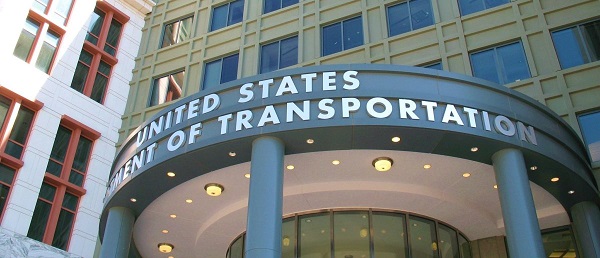

From the Daily Caller News Foundation
By Jason Hopkins
The Trump administration is creating a first-of-its-kind task force aimed at ushering in a new “Golden Age” of beautiful infrastructure across the U.S.
The Department of Transportation (DOT) will announce the establishment of the Beautifying Transportation Infrastructure Council (BTIC) on Thursday, the Daily Caller News Foundation exclusively learned. The BTIC seeks to advise Transportation Secretary Sean Duffy on design and policy ideas for key infrastructure projects, including highways, bridges and transit hubs.
“What happened to our country’s proud tradition of building great, big, beautiful things?” Duffy said in a statement shared with the DCNF. “It’s time the design for America’s latest infrastructure projects reflects our nation’s strength, pride, and promise.”
“We’re engaging the best and brightest minds in architectural design and engineering to make beautiful structures that move you and bring about a new Golden Age of Transportation,” Duffy continued.
Mini scoop – here is the DOT’s rollout of its Beautifying Transportation Infrastructure Council, which will be tasked with making our buildings beautiful again. pic.twitter.com/
9iV2xSxdJM — Jason Hopkins (@jasonhopkinsdc) October 23, 2025
The DOT is encouraging nominations of the country’s best architects, urban planners, artists and others to serve on the council, according to the department. While ensuring that efficiency and safety remain a top priority, the BTIC will provide guidance on projects that “enhance” public areas and develop aesthetic performance metrics.
The new council aligns with an executive order signed by President Donald Trump in August 2025 regarding infrastructure. The “Making Federal Architecture Beautiful Again” order calls for federal public buildings in the country to “respect regional architectural heritage” and aims to prevent federal construction projects from using modernist and brutalist architecture styles, instead returning to a classical style.
“The Founders, in line with great societies before them, attached great importance to Federal civic architecture,” Trump’s order stated. “They wanted America’s public buildings to inspire the American people and encourage civic virtue.”
“President George Washington and Secretary of State Thomas Jefferson consciously modeled the most important buildings in Washington, D.C., on the classical architecture of ancient Athens and Rome,” the order continued. “Because of their proven ability to meet these requirements, classical and traditional architecture are preferred modes of architectural design.”
The DOT invested millions in major infrastructure projects since Trump’s return to the White House. Duffy announced in August a $43 million transformation initiative of the New York Penn Station in New York City and in September unveiledmajor progress in the rehabilitation and modernization of Washington Union Station in Washington, D.C.
The BTIC will comprise up to 11 members who will serve two-year terms, with the chance to be reappointed, according to the DOT. The task force will meet biannually. The deadline for nominations will end Nov. 21.
-
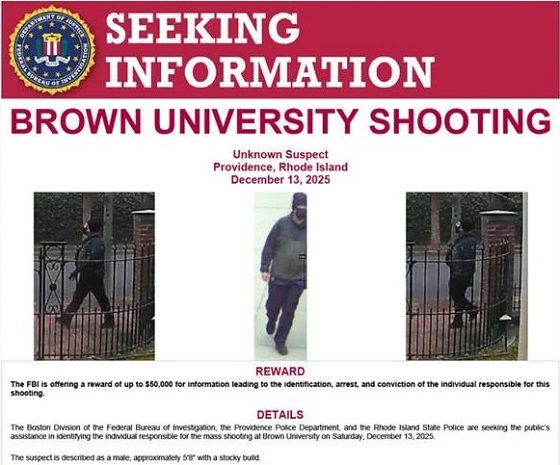
 Crime21 hours ago
Crime21 hours agoBrown University shooter dead of apparent self-inflicted gunshot wound
-
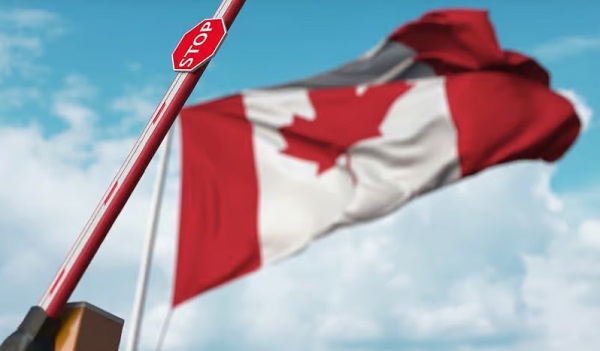
 Business1 day ago
Business1 day agoCanada Hits the Brakes on Population
-

 Crime2 days ago
Crime2 days agoBondi Beach Survivor Says Cops Prevented Her From Fighting Back Against Terrorists
-
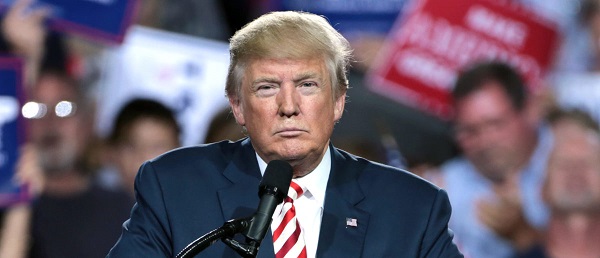
 International2 days ago
International2 days agoHouse Rejects Bipartisan Attempt To Block Trump From Using Military Force Against Venezuela
-

 Automotive2 days ago
Automotive2 days agoFord’s EV Fiasco Fallout Hits Hard
-

 Frontier Centre for Public Policy1 day ago
Frontier Centre for Public Policy1 day agoCanada Lets Child-Porn Offenders Off Easy While Targeting Bible Believers
-
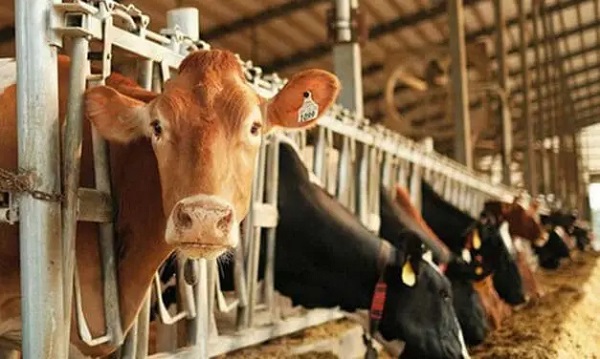
 Agriculture1 day ago
Agriculture1 day agoWhy is Canada paying for dairy ‘losses’ during a boom?
-

 International2 days ago
International2 days agoTOTAL AND COMPLETE BLOCKADE: Trump cuts off Venezuela’s oil lifeline




